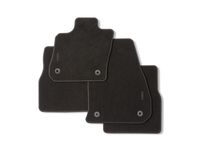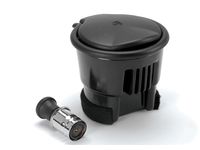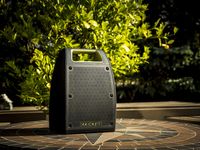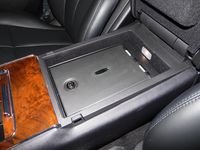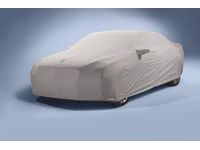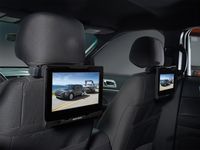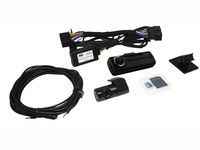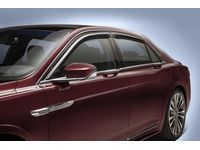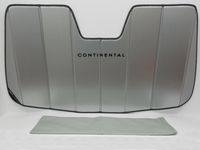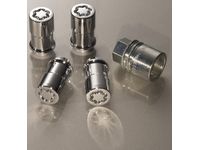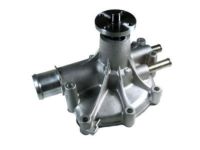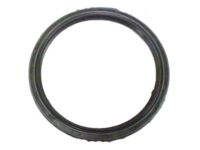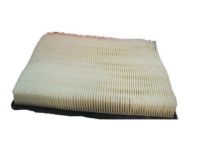

Why choose FordPartsGiant
- Devoted Service
At FordPartsGiant.com, we strive to make customer satisfaction our #1 goal by providing dedicated customer service. Our core values of success continue to demonstrate our loyalty by building dedicated relationships with all of our current and future customers. We are always ready to assist you with the slightest detail about your vehicle's parts and accessories.
- Reasonable Prices
We are the best online source for discounted prices on factory auto parts and accessories. Not everyone has the money to buy their vehicle quality parts, here at FordPartsGiant.com we make it economical to buy the best parts without sacrificing the quality or hurting your wallet.
- Swift Delivery
FordPartsGiant.com has centrally located distribution centers all across the United States. This gives you quick access to our discounted Lincoln Continental parts when you need them. We offer our customers the convenience of having parts delivered straight to their front door. We are committed to having your vehicle up and running in just a couple of days.
Popular Genuine Lincoln Continental Parts
- Engine Parts View More >
- Chassis Parts View More >
- Electrical Parts View More >
- Body And Paint Parts View More >
- Lamps & Wiring Parts View More >
- Wheels & Brakes Parts View More >
- Fuel System & Manifolds Parts View More >
- Automatic Transmission Parts View More >
- Transmission Parts View More >
- Front Suspension & Steering Parts View More >
- Rear Axle & Drive Shaft Parts View More >
Shop Genuine Lincoln Continental Parts with FordPartsGiant.com
The Lincoln Continental is a luxury passenger car that emerged as a product of Ford's personal car development. Its initial introduction was in 1939 as a Zephyr, envisioned as a recreational vehicle to entice potential buyers. The Continental was the prototype for an entirely new segment of luxury vehicles, a segment that evolved into coupes and convertibles post-World War II, prioritizing performance, style, and comfort over power and handling. The Lincoln Continental became Ford Motor Company's flagship worldwide from 1956 to 1957 and, in 1969, six generations of the Mark series were produced until 1998. The first-generation models, with square fins and a modified grille, were produced until 1942, reflecting design trends of the era. The WWII interrupted the production, and after reorganization following Edsel Ford's death in 1943, the focus on expensive luxury cars diminished. The Mark II was launched in 1956, becoming the priciest car sold by an American manufacturer, but ceased production in 1957 due to the costliness of its almost manual assembly process. The Continental division was eliminated by 1959, yet the series endured until the 1960 model year. In a move to ensure higher volume production, its range was more closely integrated with the Lincoln range, adopting the same chassis and much of the exterior design as the Lincoln Premiere. Between 1958 and 1960, the Continental Mark III-V shared the same mechanical parts as the Lincoln Capri and Premiere. The careful design and testing of each car reflect Ford's ambition to produce the finest domestic cars for the mass market of its time.
The Lincoln Continental, particularly the 2001 model equipped with the AX4N transmission around the 70,000-mile mark, is susceptible to two primary transmission issues: leakage from the second transmission's seals and potential need for transmission replacement. The first issue is often detected by red fluid patches under the vehicle, originating from various parts like the transmission pan, gasket, torque converter, and transmission lines. Road debris, wear over time, or improper sealing after fluid change can compromise the pan and gasket, while loosely torqued bolts may exacerbate leaks. The internal seals, responsible for maintaining fluid pressure, can deteriorate, leading to leaks, which, if left unaddressed, endanger the vehicle through risks like exhaust manifold ignition or transmission faltering. Furthermore, reduced fluid levels due to such leaks may result in transmission slipping, escalating wear, and potentially causing engine overheating. This can manifest in problems such as water exhaust emission, ruptured head gaskets, and even cracked engine blocks, with underlying causes ranging from aged gaskets to engine type. It's crucial to discern if overheating is a temporary issue or indicative of prolonged damage, as this affects subsequent repair approaches and costs. Specifically, for the 2001 model, post-highway parking might result in fluid leakage from the side cover, often attributed to the Main Control Cover & Gasket, remediable in about 2.5 labor hours costing between $125 to $312, not inclusive of the gasket. Separate from the Torque Converter gasket, this problem doesn't necessitate an entire transaxle removal, saving labor time. Additionally, the importance of regular maintenance, such as fluid changes every 30,000 miles and transmission filter replacements between 30,000 to 50,000 miles, can't be overstressed. Warning signs of transmission problems include delays in gear shifts, burning odors, grinding noises, and warning lights on the dashboard. Confronted with transmission concerns, vehicle owners have the choice to rebuild or replace. The former entails a thorough inspection and potential component replacements, while the latter involves fitting a new or refurbished transmission. Both tasks demand specialized expertise for optimum results. Thus, seeking guidance from specialized technicians is paramount, especially since opting for a full replacement might have higher upfront costs but ensures long-lasting dependability.
Opting for OEM parts is the ultimate decision for ensuring top-notch quality and optimal functionality. These parts undergo rigorous quality inspections and are meticulously crafted to meet Lincoln's factory standards, thereby guaranteeing a hassle-free installation process. At FordPartsGiant.com, you will find an extensive inventory of genuine Lincoln Continental parts offered at the most competitive prices online. These manufacturer-backed OEM Lincoln Continental parts ensure your satisfaction with their quality and come with a hassle-free return policy and expedited delivery service, guaranteeing a delightful shopping experience.
Lincoln Continental Parts Questions & Answers
- Q: What are three ways to check the operation of a water pump while it's installed on the engine on Lincoln Continental?A: To check a water pump, warm up the engine and squeeze the upper radiator hose. A pressure surge indicates a working pump. Look for coolant leaks from the pump's weep hole, which suggest immediate replacement to avoid shaft bearing failure. Listen for noise from the pump during operation, as this also indicates bearing failure and need for replacement. Check for bearing wear by trying to move the pump pulley; any movement means the pump should be replaced.
- Q: How do you replace the front and rear seals on an engine on Lincoln Continental Overhead cam (OHC) engine?A: To change the front seal, you'll have to take out the fan/clutch assembly; the fan shroud and drivebelt; the crankshaft pulley/vibration damper, and finally remove the old front Crankshaft Seal with care. Inspect for damage. It comes in with the open side facing in, lubricate it with engine oil, and drive it into the bore. Lubricate the lip of the seal, and install the damper onto the crankshaft paying attention to its alignment with the Woodruff key. Tighten up this bolt on a damper, put back the fan/clutch assembly and shroud, and restore a drive belt. To replace the rear seal, disconnect the battery cable, remove the drain plate then the back cover plate or backup housing. Remove the retaining ring or snap ring and discard the gasket material or old sealer.
- Q: How to replace the air filter and PCV filter element in a Lincoln Continental?A: Replace the air filter and PCV filter element at set intervals. For carbureted models, the filter is on the carburetor top. Unscrew the wing nut, lift the cover, and remove the filter. Clean the housing with a rag and insert the new filter. If there's a PCV filter, replace it. For fuel-injected models, detach the clips, remove the cover and filter, clean the housing, and insert the new filter. Ensure the marked side faces up if marked TOP. Secure the cover with the clips.














































